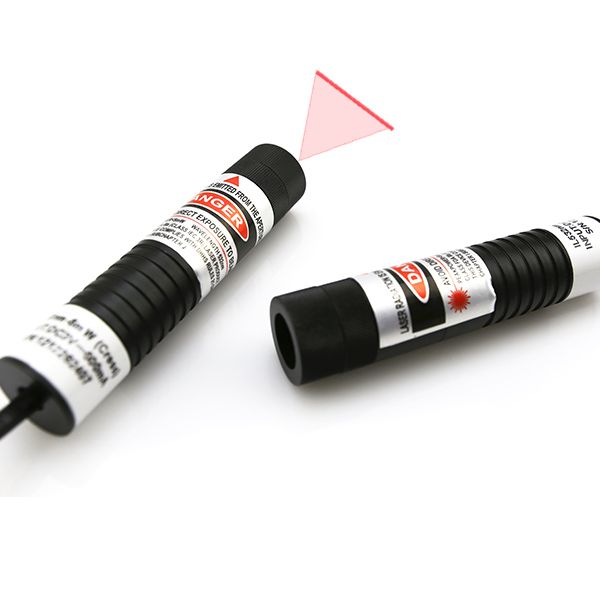
What is an efficient job to make ultra clear and fine line indication in scientific research works? Not able to rely on the use of any prior line drawing or printing work, professionals are beginning to apply a highly bright and intense light emitted tool of a 650nm red laser line generator. It emits highly visible red laser light directly from an import 650nm red laser diode. Featured by long developing history and mature laser diode tech application, the finished production of a red line laser always enables ultra stable performance and quite low production cost. According to quite easy installation or integration with scientific experimental device or equipment, it enables long term lasted and highly precise red line projection for multiple laboratory environments effectively.
Basically 650nm red laser line generator gets proper use of an external AC/DC adapter as its electric power source, thus there is sufficient space leaving for tube cooling down. Employed by an import 650nm red laser diode within 5mW to 100mW and 150mW to 500mW, cooperated with a metal heat sink cooling system, it has been designed and manufactured with different dimension anodized aluminum alloy housing tube. This red line laser module always gets superior nice heat dissipation and ultra stable red reference line projection. Owing to its easily visible laser light observation, red laser light is clearly visible to the naked eyes, eliminating the need for complex receiving equipment. It can be used directly as a visual reference, perfect for intuitive observation in scientific research.
Being made with high straightness line emitted glass coated lens, available with wide fan angles of 10 to 110 degree, 650nm red laser line generator always maintains highly fine and bright red reference line in distance, which can be adapted to varying experimental distances and accuracy requirements. Featured by its ultra compact structure design and adjustable focus optic lens design, this red line laser module can be easily integrated with scientific research equipment such as cameras, sensors, and optical platforms, making it easy to integrate into experimental systems. When it gets superior nice environmental adaptability, sometimes it features anti-interference and low drift, meeting the requirements for long-term stable operation in constant temperature and complex laboratory environments.
General applications in scientific research fields:
Mechanical Experiment Reference: 650nm red laser line generator is used in material tension/bending experiments to mark the initial position of the specimen and observe deformation and displacement with a high-speed camera. It can also serve as a reference for calibrating the straightness of mechanical devices such as guide rails and pendulums.
Optical Research Assistance: In light reflection, refraction, and interference experiments, it provides a highly collimated line light source to assist in observing changes in the optical path. It can also be used for fiber coupling and the installation and alignment of optical components (lenses and prisms).
Fluid Dynamics Observation: In flow field visualization experiments (such as particle image velocimetry (PIV), a red alignment laser line illuminates tracer particles in the flow field, and a camera is used to capture particle motion trajectories and analyze flow velocity and flow distribution.
Biomedical Research: It is used for marking tissue sections (such as for regional demarcation in pathology sections) or tracking the movement of microorganisms. Low-power red light is minimally damaging to biological specimens.
Precision Measurement Calibration: 650nm red laser line generator serves as a calibration light source for 3D scanning and laser ranging equipment, calibrating the linear accuracy of measurement systems. It can also be used for workpiece positioning in micro-nanofacture to ensure machining accuracy.
Skip to content


High Power Blue, Green, Red, Infrared Laser Modules
high power laser modules, high power green laser, high power red laser, high power blue laser, high power infrared laser